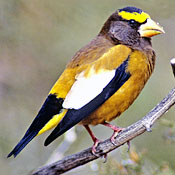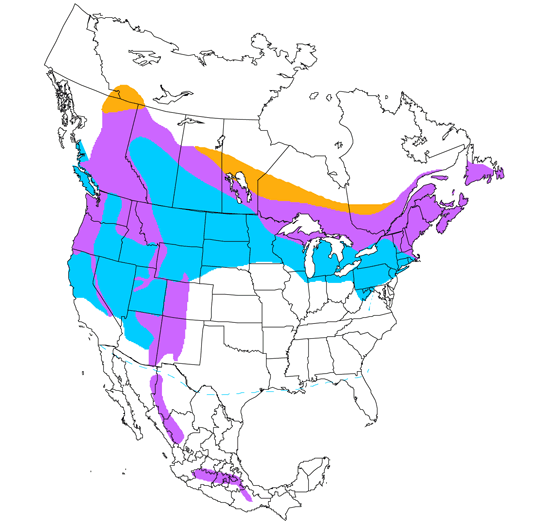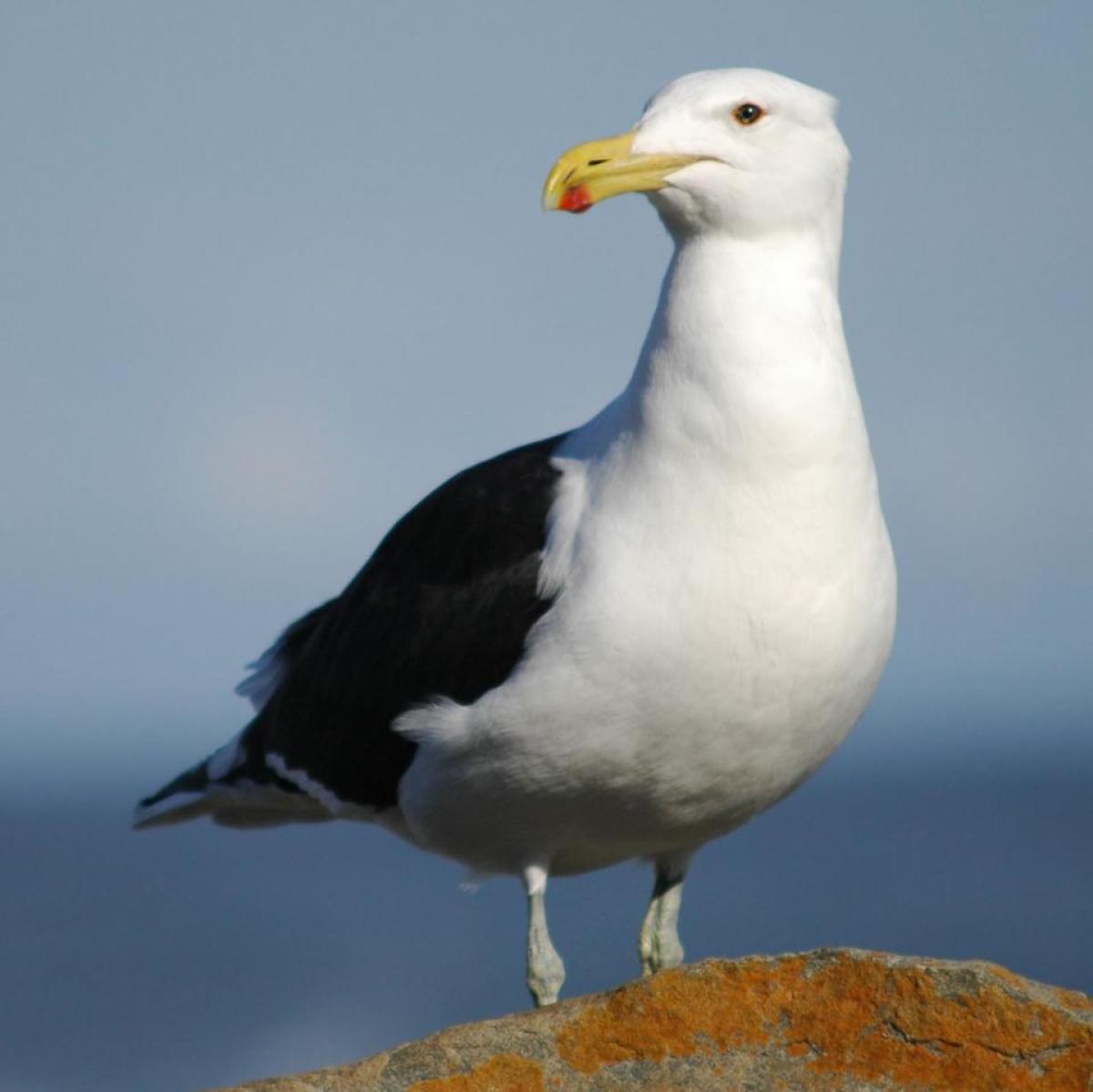Evening Grosbeak
Coccothraustes vespertinus

Perching

Length: 8 in. (20 cm )
A species primarily of coniferous or mixed coniferous forests at higher altitudes and latitudes, during some winters it erupts into lower elevations and farther south than normal. It can be common at winter seed feeders, but it also commonly is attracted to road salt used to melt ice. During the summer it supplements it seed diet with insects. The small nest of twigs is placed high in a tree far out on a horizontal branch.
The four-digit banding code is EVGR.
Bibliographic details:
- Article: Evening Grosbeak
- Author(s): Dr. Biology
- Publisher: Arizona State University School of Life Sciences Ask A Biologist
- Site name: ASU - Ask A Biologist
- Date published: 13 Jul, 2017
- Date accessed: 24 May, 2025
- Link: https://askabiologist.asu.edu/activities/bird/evening-grosbeak
APA Style
Dr. Biology. (Thu, 07/13/2017 - 15:38). Evening Grosbeak. ASU - Ask A Biologist. Retrieved from https://askabiologist.asu.edu/activities/bird/evening-grosbeak
Chicago Manual of Style
Dr. Biology. "Evening Grosbeak". ASU - Ask A Biologist. 13 Jul 2017. https://askabiologist.asu.edu/activities/bird/evening-grosbeak
MLA 2017 Style
Dr. Biology. "Evening Grosbeak". ASU - Ask A Biologist. 13 Jul 2017. ASU - Ask A Biologist, Web. https://askabiologist.asu.edu/activities/bird/evening-grosbeak
Be Part of
Ask A Biologist
By volunteering, or simply sending us feedback on the site. Scientists, teachers, writers, illustrators, and translators are all important to the program. If you are interested in helping with the website we have a Volunteers page to get the process started.






